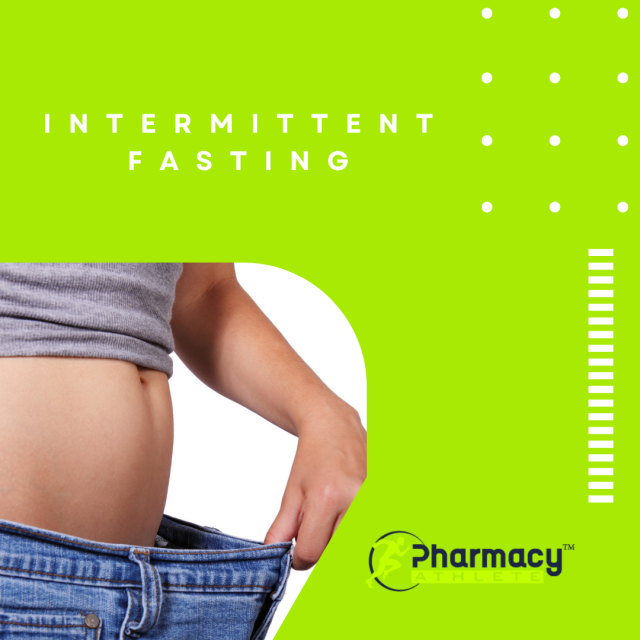Everything You Need to Know About Intermittent Fasting, The Fat-Burning Zone
Before I talk about intermittent fasting, there’s two things that I absolutely love to do: stay lean and eat my favorite foods. Quite contradictory, right? But that’s two of my favorite activities in the world. I love food and I never deprive myself of anything just so I could stay fit. If I feel like eating donuts, I eat them.
When I want to grab a margarita, beer or sake bomb, I indulge myself. Whenever I’m at a restaurant, I’ll order all my favorite dishes on the menu. I love getting a steak and some delicious sides, and of course, finish it off with a good dessert. Simply put, I eat what I want, when I want it.
So, there’s the question that most of you might have in mind: “How do you eat what you want and still have six-pack abs?” This is because I only go as high as 6% body fat at some point, but I usually stay within 4-5% all year round. I know this may sound odd to you, but here’s the thing: you don’t need to choose between eating the foods you love and keeping your body fit because you can do both.
How is that possible, you ask? The answer is simple: intermittent fasting.

Understanding intermittent fasting
Intermittent fasting is considered one of the most popular fitness trends in the world today—and for good reason. From the term itself, this concept involves alternating cycles of fasting and eating to help promote weight loss and keep a lean physique.
Several studies have also revealed that intermittent fasting helps boost the metabolism, protect against certain diseases, and even extend your lifespan.
Intermittent fasting uses a technique where you fast for a set amount of time followed by a period of eating. Unlike most diet programs, this method doesn’t tell you what types of food to eat but when you should consume them. Throughout your intermittent fasting session, you’ll cycle back and forth between fasting and feeding.
There are different timings for intermittent fasting depending on your needs. In my case, I found the 16/8 intermittent fasting method to work best for losing body fat and maintaining muscle mass. This means that you’ll need to fast for 16 hours and eat within that eight-hour window.
Is intermittent fasting for everyone?
I would honestly say that intermittent fasting isn’t for everyone. Like other diet programs, it’s all about doing trial-and-error to see if it works for you or not. Some people have tried intermittent fasting and it worked wonders for them while others just didn’t see it fit their lifestyle.
It’s also very important to remember that intermittent fasting is not a way to eat all the junk food that you want within that feeding window and expect to get a fit and healthy body. If your diet is fairly messed up, you need to clean it up first before you get into intermittent fasting.
Otherwise, you’ll just end up disappointed because you’ll never get ripped if you eat nothing but foods that are bad for you. But if you have a clean diet and you’ve reached a fat-burning plateau, this is the best diet option for you.
What do you need to know about intermittent fasting?
Before you could start embracing intermittent fasting into your lifestyle, it’s very important to understand the concepts and science behind this method. Although it has been popular over the last few years, I’ve been looking into intermittent fasting as a way to lose fat way before the trend began.
In fact, fasting has been part of human evolution for centuries because early humans didn’t have a way to keep their food for long. If they couldn’t hunt or find food to eat, they’ll fast for a period of time until they’ll have something to serve at the table.
During the early 2000’s, me and my colleagues at the University of Copenhagen did some research about fasting and fast loss at the lab where I did my postdoctoral work at the Yale University School of Medicine.
We published several papers that revealed that one of the key catalysts for fat loss through fasting is an increase in the activity of genes that in turn increase the number of calories and that amount of fat the body is able to burn.
To put it into a more scientific perspective, fasting triggers the genes that sends signals for certain uncoupling proteins and enzymes that trigger fat burning. These proteins work by poking holes into the mitochondria inside muscle cells so they produce less energy.
It causes the mitochondria to burn more calories in order to produce more energy in the form of ATP. This means that when you go into fasting, you’ll be able to burn more fat and calories. But we also discovered a more astonishing fact inside the lab—that when you resume eating after a fast, these genes increase even further, which means that while you’re eating, you’re still burning fat and calories.
Intermittent fasting and muscle building
There are people who claim that intermittent fasting helps build muscles, which is partly true, but there are still no research studies to prove if it does help with muscle growth.
From my personal experience and the data I’ve collected over the years, intermittent fasting limits muscle growth as compared to following my “Muscle-Building Rules” article that offers a guide to eating in order to maximize muscle growth.
A study conducted among men during Ramadan revealed that the subjects didn’t lose any muscle mass during their own intermittent fasting where they fast during the day and eat only between sunset and dawn, but they lost a significant amount of body fat. Some heavily muscled subjects, however, reported that they ended up losing some muscle mass during this period of intermittent fasting.
The bottom line here is that intermittent fasting isn’t the best approach if you want to maximize muscle growth, but it can help you build muscle.
Getting to know your carb considerations
Intermittent fasting has been proven to promote fat loss, but it’s not something that you should use when you’re only beginning to follow a healthier diet.
In fact, you should only do intermittent fasting once you’ve hit a fat burning plateau. This will help you keep those proteins and fast higher before you can start cutting them off to lose more body fat.
Once you reach a 0.25 grams of carb per pound of body weight per day consumption, that’s the perfect time to start intermittent fasting. This method also works so well with a low-carb diet, as revealed in our study at the Yale lab.
For instance, if you fast and eat a low-carb meal after, the activity in your genes help promote fat loss further. But when you eat a high-carb meal after, it will slow down gene activity, which also reduces the efficiency of fat loss.
Counting your calories
Doing intermittent fasting takes a lot of commitment since you need to make sure that you consume enough foods to get the right amount of calories in your body within that eight-hour window. Intermittent fasting automatically limited your calorie intake, which means that it’s not advisable to use it early on in your diet because it would be hard for you to adjust later on.
Timing your meals
If you work out all the time, you need to time your meals and fasting periods based on when you train. For instance, if you usually work out in the morning, it’s best to start your eight-hour feeding window with your post-workout meal. This means that if you work out until 8:00AM that should also mark the start of your feeding window.
The intermittent fasting meal plan
Now, you might be asking the question: “How should my meals be when I’m doing intermittent fasting?” This is why I created a sample intermittent fasting meal plan that helps you incorporate this method with the four main training time points throughout the day.
But while I recommend that you time your fast and mealtimes around the time you train, you can also make some adjustments on your training time depending on where you find the most convenient to fast.
If you have a hard time fasting at night, time your training later in the day so you can fast in the morning and eat at night when your cravings are high.
You’ll also notice that these meals still include breakfast, lunch and dinner, but you don’t necessarily need to consume them during regular mealtimes.
For instance, if you like to work out in the morning and start to eat your post workout meal at 8:00AM, then your feeding window ends at 4:00PM. This means that you’ll be eating lunch and dinner around the same time.
Whatever timing and meal plans you choose, remember that intermittent fasting is not so much about what foods you choose to eat during those meals, but the right times on when you fast and eat throughout your intermittent fasting cycle.
Check out my Super Lean Out 8 At Home Workout Program Here


